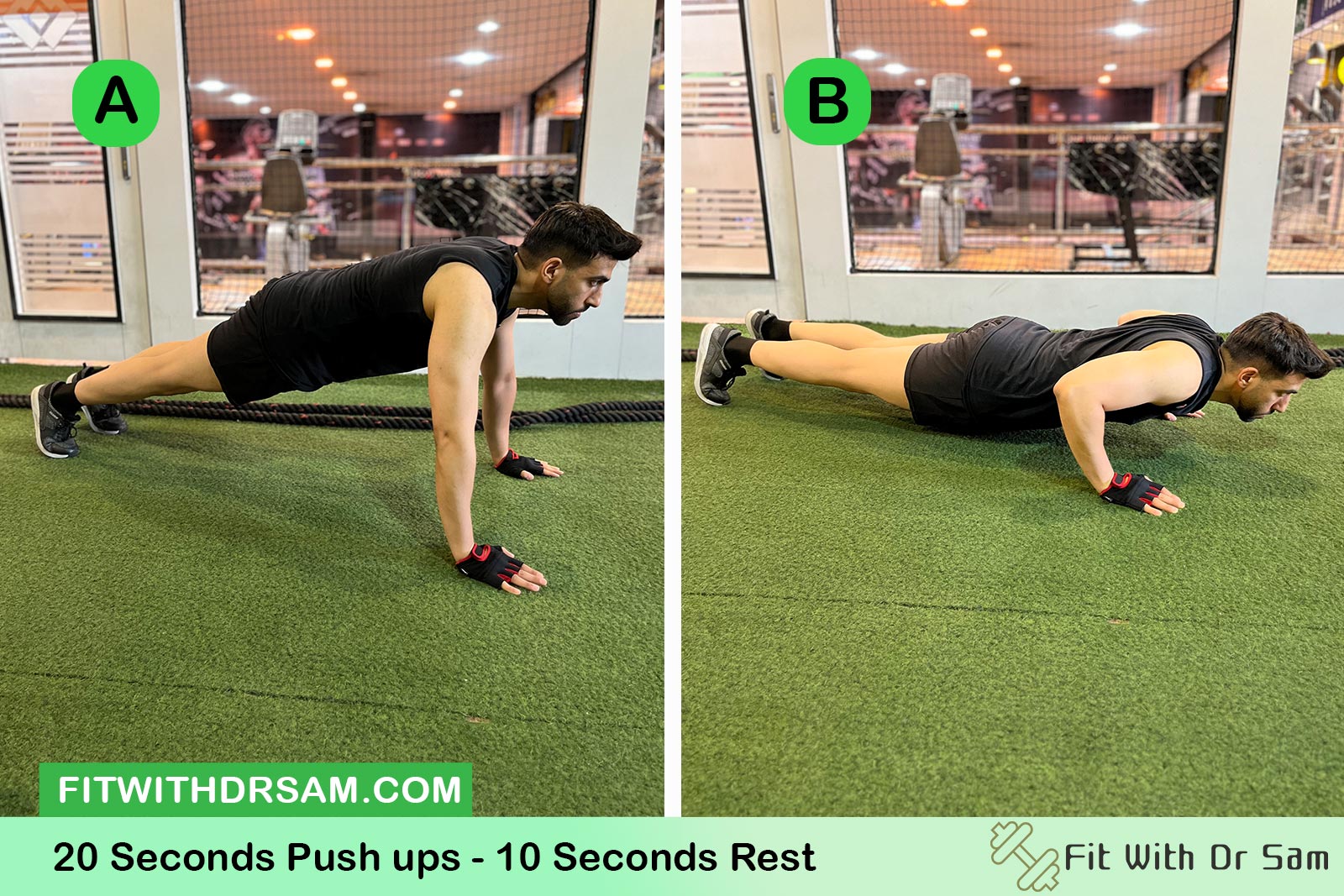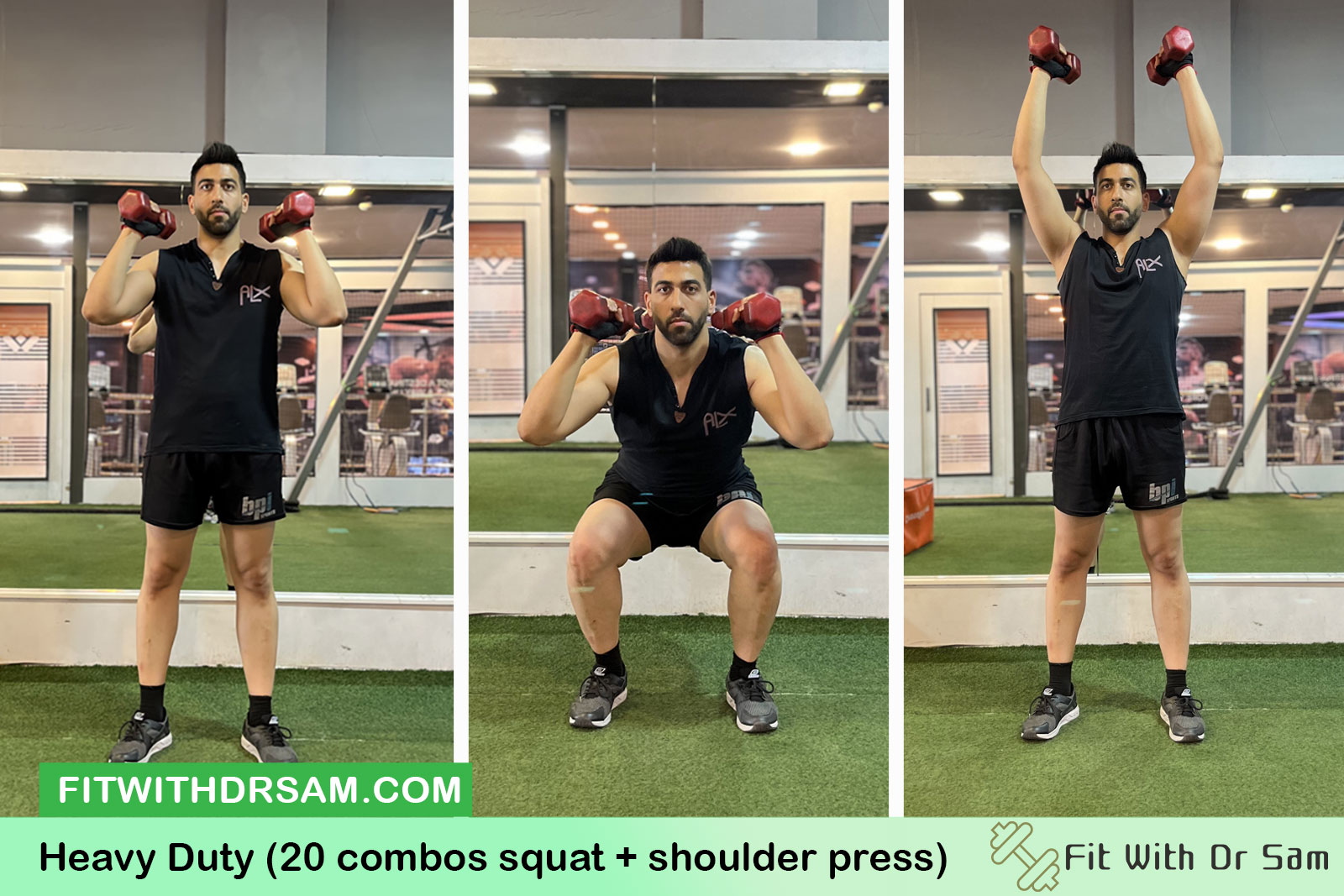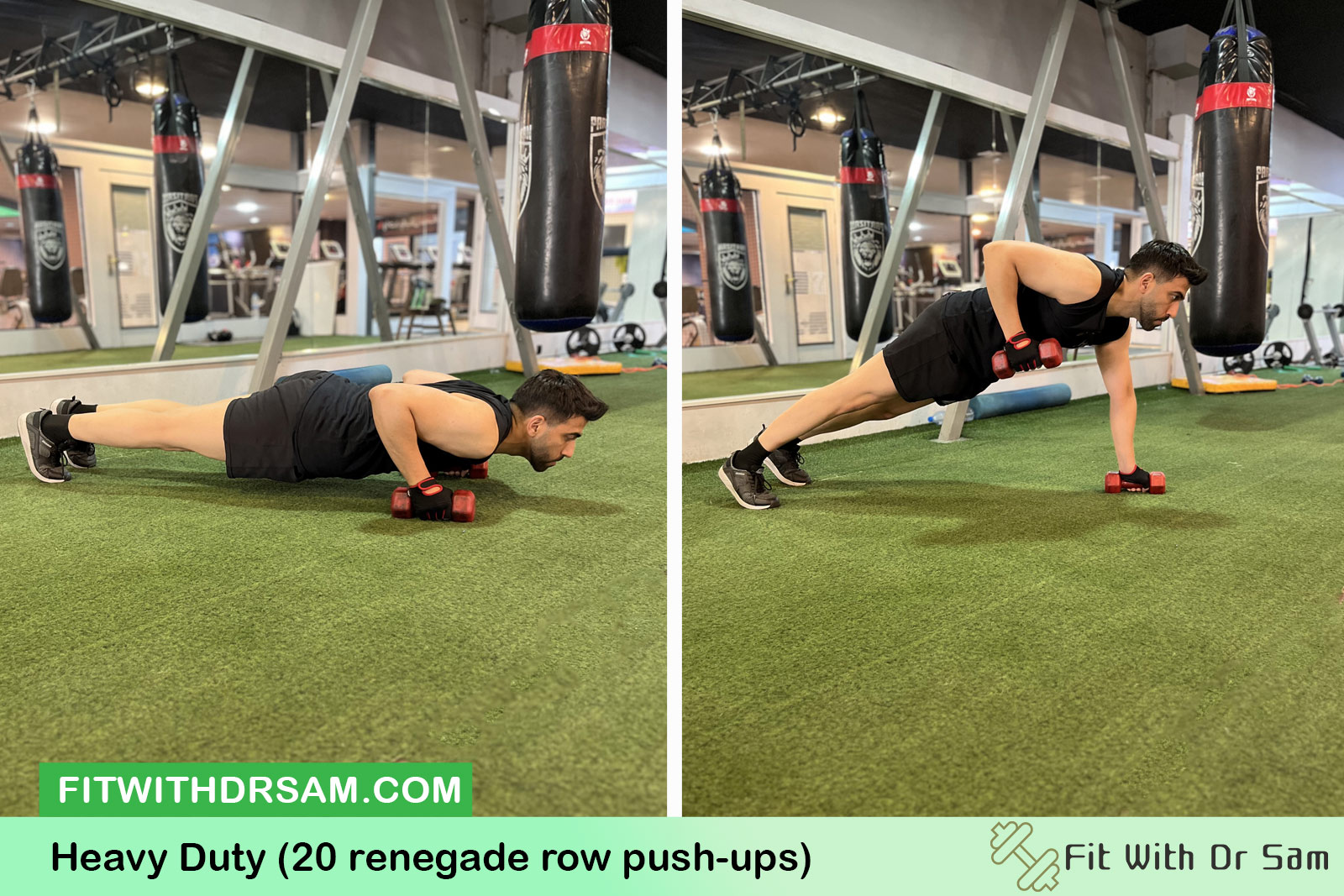Mike Mentzer’s 3-Day Split: Heavy Duty Workout for Maximum Muscle Growth

The Mike Mentzer 3-day split is a high-intensity training program designed for maximum muscle growth with minimal gym time. Rooted in Mentzer’s ‘Heavy Duty’ principles, this routine emphasizes short, intense workouts performed with maximum effort to fully stimulate muscle fibers. A typical split might involve training chest and back on day 1, legs on day 2, and shoulders and arms on day 3, allowing ample recovery between sessions. While highly effective, this approach requires strict adherence to proper form, progressive overload, and sufficient rest. It’s crucial to understand the principles of Heavy Duty training before attempting this routine. Sample Workout Schedule (with sets, reps, and exercises)
In this article we are going to fully explore his workout style also known as Heavy Duty taking a closer look at its benefits, drawbacks, examples and principles through a science-based approach. So if you’re interested in learning more about Mike Mentzer’s workout style and you’re wondering whether it’s a good choice for you or not, stay tuned till the end to find the answers to your questions.
You can also read: Did Mike Mentzer’s training style cause his premature death?
Who Was Mike Mentzer?
Mike Mentzer was a professional bodybuilder, author, and philosopher, who had become famous for his revolutionary approach towards fitness. He came up with an innovative workout style, known as “Heavy Duty,”. Mentzer challenged the traditional high-volume training methods that used to be prevalent in bodybuilding with his new style. His philosophy was mainly inspired by the principles of high-intensity training (HIT), emphasizing shorter and more intense workout sessions.
What is Heavy Duty Training?

Heavy Duty is a popular workout style among the ones who don’t have enough time to fit hitting the gym into their everyday schedule. In fact, Heavy Duty training is a form of high-intensity training that mainly focuses on maximizing muscle growth through brief, infrequent, and intense workout sessions. According to Mentzer himself, this approach stimulates muscle growth more effectively and efficiently and it also reduces the risk of overtraining which is a common issue with traditional high-volume workouts.

Mike Mentzer 3 Day Split Workout Routine
Mike Mentzer 3 day split workout routine has heavy-duty training to its core while focusing on volume mass and giving the body a shock in a short period while having a three-day recovery.
3 day split Mike Mentzer workout routine is highly efficient as it includes shorter workouts in comparison with other workout routines, therefore, saves time. In addition, it is highly intense which will eventually result in muscle growth through maximum effort and reduces risk of overtraining.
Sample Workout Schedule (with sets, reps, and exercises)
- Day 1: Chest and Back
1. Bench Press: 1 set to failure
2. Incline Dumbbell Press: 1 set to failure
3. Deadlift: 1 set to failure
4. Bent-over Row: 1 set to failure
- Day 2: Legs
1. Squats: 1 set to failure
2. Leg Press: 1 set to failure
3. Leg Curl: 1 set to failure
4. Calf Raise: 1 set to failure
- Day 3: Shoulders and Arms
1. Military Press: 1 set to failure
2. Lateral Raise: 1 set to failure
3. Bicep Curl: 1 set to failure
4. Triceps Extension: 1 set to failure
- Other days of the week: simply include rest days to give your body time to recover from all the heavy training.




What are the Key Principles of Heavy Duty Training?
- Intensity Over Volume
Mentzer believed that the intensity of the workout is more critical than the volume. He believed that quality defeats quantity and the key to building muscle is the intensity of your workout sessions, not their frequency. Each exercise should be performed to failure, or in other words, you need to continue each exercise to the point which you cannot complete another repetition with good form.
- Low Frequency
In Heavy Duty training you don’t need to hit the gym every day. In this workout style you can train fewer times per week and take longer rest days, allowing your muscles more time for recovery and growth. That’s why this style has gained more popularity among the ones who have a tighter schedule.
- Short Duration
Workouts in Heavy Duty training are designed to be shorter but highly effective. These sessions typically last less than an hour.
The Science Behind High-Intensity Training
As mentioned before, Heavy Duty training is rooted in the principles of high-intensity training, which has been supported by various scientific studies. According to a study published in PLOS ONE, high-intensity interval training (HIIT) can enhance cardiovascular endurance, strength, and muscle hypertrophy due to its ability to activate fast-twitch muscle fibers and stimulate anabolic hormones like testosterone and growth hormone leading to more muscle hypertrophy [1].



Another study from the European Journal of Applied Physiology found that low-frequency, high-intensity resistance training was just as effective in promoting muscle growth as higher-frequency programs [2].
These findings support Mentzer’s claim that more is not necessarily better when it comes to workout frequency.
Who Should Try Heavy Duty Training?
Heavy Duty training is ideal for individuals looking to maximize muscle growth with limited time for workouts. It is also beneficial for those prone to overtraining or injury from high-volume routines.
How Often Should I Train on a Heavy Duty Program?
Mentzer recommended training 2-3 times per week. He mainly stressed on giving your muscles enough time to recover between training days.
Can Beginners Start with Heavy Duty Training?
Heavy Duty can be adapted for beginners. However, it is necessary to ensure proper form and technique to avoid injuries or taking things too far. That is why, as a beginner if you decide to try this style it’s better to do it under the guidance of a knowledgeable trainer.
Mike Mentzer’s Workout Routine
Mike Mentzer recommends the most intense bodybuilding workouts possible, to trigger the strongest possible muscle growth. As according to him high intensity excludes duration, training must be as brief as possible: a single series per exercise brought to muscular failure, and one or two exercises per muscle only.
Finally, muscle growth does not take place during training (we destroy the muscle), but during the recovery phase (we rebuild and develop the muscle), Mike Mentzer recommends training as infrequently as possible: two to three times a week only.
The Heavy Duty method is intended to be the first truly scientific training method for increasing muscle mass. It is intended for anyone wishing to gain muscle volume quickly, thanks to infrequent but intense training. Kyle Hunt, the trainer, powerlifter, and the founder of Hunt Fitness, believes that a profitable Mike Mentzer workout routine should [3]:
- “Increase the number of reps performed with the same weight.
- Increase the amount of weight used.
- Decrease the amount of time required to do the workout”
A typical Heavy Duty workout routine consists of a few compound exercises that target the major muscle groups. Mike Mentzer’s training programs offer flexibility, allowing for 2, 3, 4 or 5 day splits. The 3 Day split is the most popular choice. Here’s an example for 3 Day split routine: (remember as we explained before, the term “to failure” means you should continue doing the set until you’re no longer capable of doing so with the correct body form.”
Mike Mentzer ABS Workout
Mike Mentzer training philosophy centered around heavy compound exercises and a focus on overall muscle development.
While Mentzer didn’t prescribe direct abs work, he did acknowledge the importance of low body fat for revealing the abdominal muscles. This meant a focus on:
- Nutrition: A balanced diet to support muscle growth and fat loss.
- Consistent Training: Have a well-structured workout routine to build overall muscle mass. To figure out how to stay consistent in your workout, You can read “How to stay consistent with your working out” article.
If you’re looking for visible abs, it’s essential to combine proper training with a suitable diet. While direct abs exercises can be included in a routine, it’s important to remember that overall body composition is the primary factor in achieving a defined midsection.
You can read Effective Training and Nutrition Principles for Building ABS Muscles and a Six Pack article to discover all abs workout.
Benefits of Heavy Duty Training
- Time Efficiency
Heavy Duty training is highly time-efficient, making it perfect for those with busy schedules. According to a research published in the Journal of Applied Physiology, short, intense workouts can produce similar muscle gains as longer sessions [4].
- Reduced Risk of Overtraining
In Heavy Duty training we mainly focus on intensity instead of volume. That is why this method can minimize the risk of overtraining. Overtraining can lead to fatigue, decreased performance, and even injury. A study in the Sports Medicine Journal highlights that high-intensity, low-frequency training reduces the risk of these adverse effects [5].
- Enhanced Muscle Growth and Strength
The principle of training to failure can significantly enhance muscle hypertrophy and strength. According to a meta-analysis training to failure recruits more muscle fibers, leading to greater muscle growth [6].
Drawbacks of Heavy Duty Training
- Risk of Injury
The intense nature of Heavy Duty training can increase the risk of injury if exercises are not performed with proper form. It is crucial to prioritize technique and consider working with a trainer, especially for beginners.
- Mental and Physical Demands
Training to failure needs a high level of mental and physical preparedness. Some individuals may find it challenging to maintain the necessary intensity level which can impact this technique’s effectiveness.
- Limited Exercise Variety
Heavy Duty training might turn into something boring after quite a while. In fact, in this technique the focus on a few compound exercises can lead to a lack of variety. Thus can be less motivating for some individuals and decrease their moral and good will. In order to avoid this issue you can It is change exercises every now and then to maintain engagement and prevent plateaus.
Mike Mentzer vs. Arnold Schwarzenegger’s Workout Technique
There are only few names that stand out like Mike Mentzer and Arnold Schwarzenegger in the world of fitness legends. These two have both left a significant mark on the fitness world, but their training philosophies couldn’t be more different. Many of you might be fond of both and feel kind of torn between their techniques, not knowing which one to choose. That’s why I am going to break down Mike Mentzer and Arnold’s workout techniques and talk about their pros and cons, comparing them together and finally sharing my own take on which one might work best for you depending on your goals.
We have discussed about Key Features of Mentzer’s Techniques , we will now shift our focus to analyzing Arnold Schwarzeneggers training methods.
Arnold Schwarzenegger’s workout technique
Arnold’s method is quite the opposite. In the classic bodybuilding split, he emphasizes on high volume training and frequency. As a seven-time Mr. Olympia, Arnold’s technique reflects the traditional approach to bodybuilding.
Key Features of Arnold’s Technique:
Let’s take a look at the key features of Arnold’s workout technique:
- High Volume, Moderate Intensity: Arnold’s workouts often have multiple sets (usually 4-5) of 8-12 reps for each exercise.
- Frequent Workouts: He trained six days a week, hitting each muscle group twice a week, allowing for more overall volume.
- Isolation Exercises: Arnold included plenty of isolation movements to target specific muscles.
Comparing the Two methods
- Volume and Frequency
Mentzer: Includes fewer sets and less frequent workouts.
Arnold: Promotes higher volume with more frequent training sessions. - Intensity
Mentzer: This method is all about continuing to absolute failure.
Arnold: Keeping your workout session at a moderate intensity level across multiple sets. - Recovery
Mentzer: Longer rest periods between workouts for muscle recovery.
Arnold: Shorter recovery time for muscles. This method is all about consistency.
Which Technique is Best for me?
The truth is, choosing between Mentzer and Arnold depends largely on your body type, fitness goals, and lifestyle. If you’re a naturally muscular person (like an ectomorph), you might thrive on the high-volume approach of Arnold. On the other hand, if you’re a hard gainer or have a busy schedule, Mentzer’s short, intense workouts might suit you better.
Also, if you’re planning on building size and definition Arnold’s method may be more effective. On the other hand, if you are looking to increase strength with less time commitment you should give Mentzer a shot.
Is there a way to have Mentzer and Schwarzenegger’s workout techniques together
What if I told you that you don’t have to choose just one? Many bodybuilders find that blending the two techniques works wonders. Here’s a perfect example:
- Day 1: Start with Arnold’s high-volume chest workout (bench press, incline press) and finish with Mentzer’s heavy flys, pushing to failure.
- Day 2: Use Arnold’s back routine followed by a Mentzer-inspired deadlift session focused on fewer, heavier sets.
- Day 3: Go for a light Jogging session.
- Day 4: Give your body time to recover.
- Day 5: Some light stretching is an amazing idea.
- Day 6: You can engage in a yoga session.
- Day 7: It’s recovery time for your muscles.
In summary, both Mike Mentzer and Arnold Schwarzenegger have valid and effective workout techniques. Mentzer’s Heavy Duty training is perfect for those looking for efficiency and strength, while Arnold’s split training is best for those who are aiming for size and definition. Ultimately, the best approach varies from person to person, and a combination of both may provide the most balanced results. Fitness is about finding what works for you, so try to have as much fun with it as possible while experimenting new methods.
Conclusion: Is Heavy Duty Training Right for You?
Mike Mentzer’s Heavy Duty training offers a unique approach to bodybuilding. This style is supported by scientific research and it can provide substantial muscle growth and strength benefits while minimizing the risk of overtraining.
However, it also comes with potential risks and downsides, such as increased injury risk and the mental demands of training to failure.
The answer to the question “is Heavy Duty Training right for me?” lies in your fitness goals, experience level, and personal preferences. By understanding the principles, benefits, and drawbacks, you can make an informed decision and potentially incorporate elements of Mentzer’s approach into your fitness routine.
FAQ
-
Is Heavy Duty Training Safe for Older Adults?
Heavy Duty training can be adapted by any age group including older adults. However, it is essential to modify the intensity and ensure exercises are performed safely. Don’t forget to consult an experienced trainer to avoid getting hurt.
-
Can Heavy Duty Training be Combined with Other Workout Styles?
It is absolutely possible to combine Heavy Duty training with other workout styles. In fact, by doing so you can provide variety and target different muscle groups effectively and avoid losing motive. However, it is essential to balance intensity and recovery.
-
What Should I Do If I Experience Soreness or Fatigue?
It is important to remember that soreness and fatigue are common with high-intensity training styles. The best way to prevent them is by ensuring adequate rest and nutrition, and sometimes even reducing workout intensity if you’re feeling discomfort.
References
[3] https://kylehuntfitness.com/the-mike-mentzer-heavy-duty-training-program/





